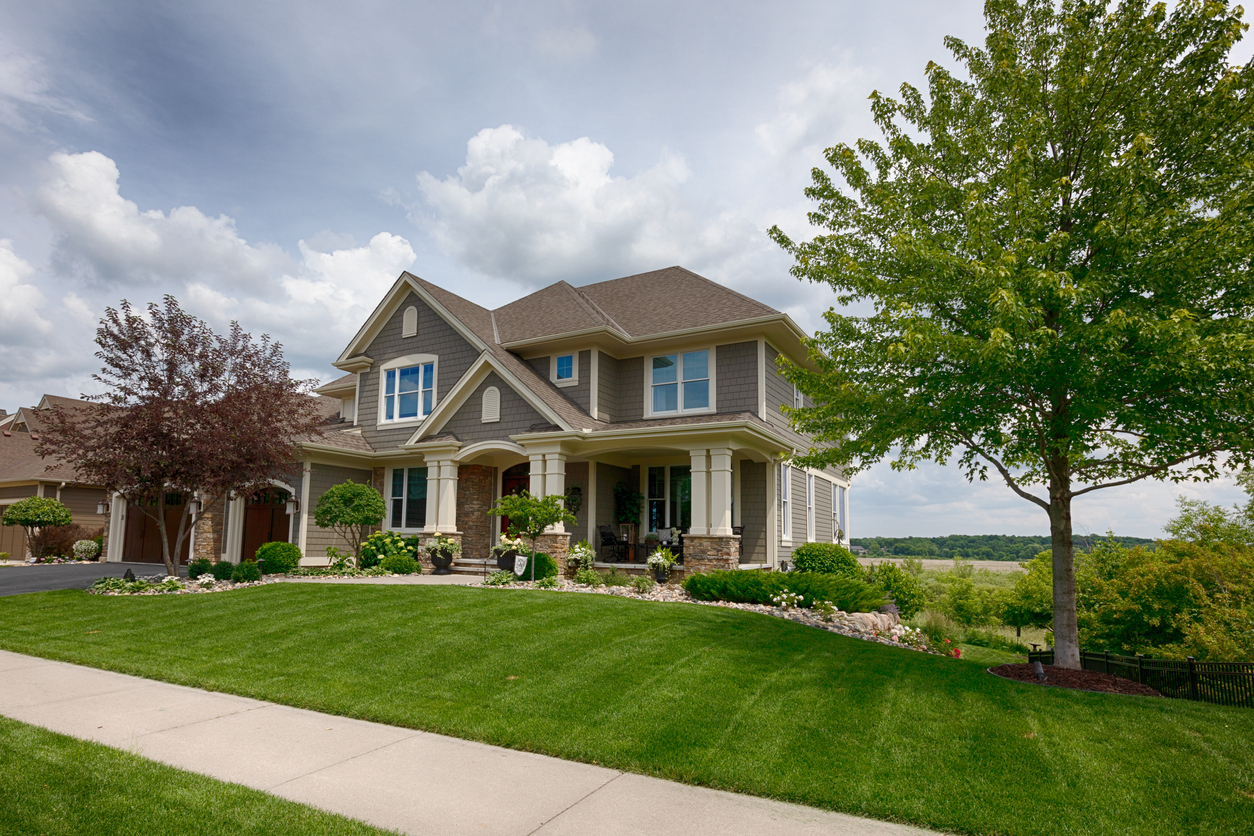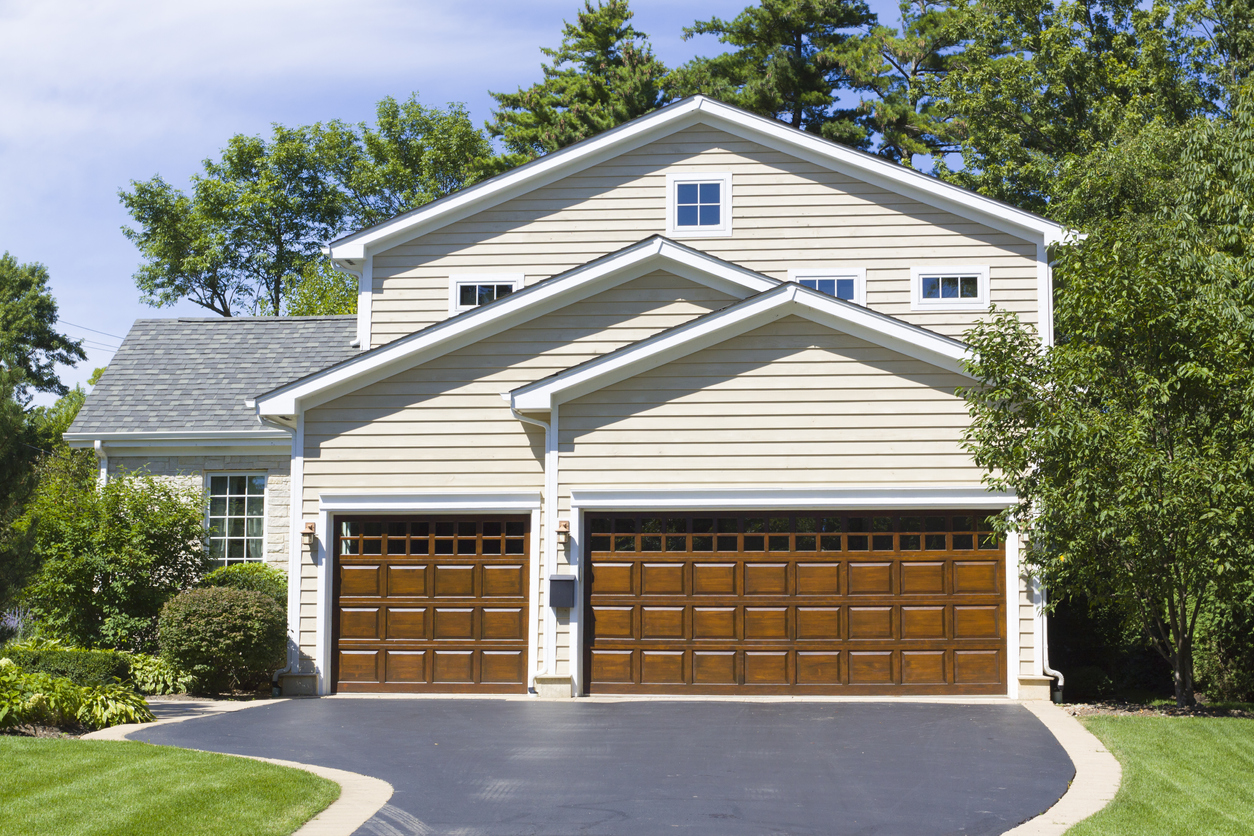We may earn revenue from the products available on this page and participate in affiliate programs. Learn More ›
Your front yard, regardless of its size, plays an important role in your home’s overall curb appeal. Attractive landscaping, however, requires more than just a beautiful lawn. A well-landscaped front yard should take into account the style and size of your house, how it’s sited on the property, the amount of sunlight the yard receives, and how it can best be enhanced by plantings, bushes, shrubs, and trees. The front yard should also include hardscaping features, from walkways and driveways to raised beds, planters, and decorative containers. What are the best practices for front-of-house landscaping? To learn more, we reached out to Dorian Winslow, certified landscape designer and owner and president of Womanswork, an online retailer of gardening apparel and supplies.
1. Find a Focal Point

Every view in your landscape should have a focal point. “For your front yard, the focal point is the front door, so be sure you don’t hide it,” advises certified landscape designer and Womanswork.com president, Dorian Winslow. If you are considering major plantings such as trees, think about how they will frame the front door as you approach your house.
RELATED: How to Pick a Front Door Color
2. Make Good Use of Ground Covers

Ground covers are a low-maintenance alternative and complement to grass. “Because they’re low to the ground and dense, they give a neat appearance with very little maintenance,” says Winslow. “They also allow you to introduce spring bulbs to your landscape, because the ground cover hides the dead leaves after the bulbs bloom.”
RELATED: The Best Low-Maintenance Ground Cover Plants for Your Property
3. Set a Direct Path

When considering the pathway from the driveway to your front door, “remember that our natural instinct is to take the most direct route to where we’re going,” notes Winslow. A curved path to the front door is nice, but a meandering path may not be. “If you want to take your visitors on a circuitous route, be sure you plant densely along each side of your path.”
RELATED: The Right Path: 15 Wonderful Walkway Designs
4. Rethink Foundation Plants

“Avoid treating foundation plants as if they were little soldiers pressed up along the perimeter of your house,” advises Winslow. “For a two-story house, foundation plantings should extend at least 8 feet out from the house.” When you’re planting shrubs, think about how they will look in 3 to 5 years. “You don’t want to select varieties that will block your windows,” she adds.
RELATED: The 14 Best Shrubs for the Front of the House
5. Add Some Privacy

If you are looking to add some privacy in your yard, consider a buffer of shrubs, suggests Winslow. “A buffer that includes multiple plants at varying heights can accomplish the same thing as a solid hedge or a fence but is far more welcoming,” says Winslow. Alternatively, if you are just trying to block the view from a particular room—or a part of your yard from your neighbors—plant a couple of trees or shrubs with strategic precision.
RELATED: The 15 Best Trees and Shrubs to Grow for Backyard Privacy
6. Deter the Deer

If deer are an issue in your area, select shrubs that are deciduous (lose their leaves in the winter) but retain their form even when their leaves are gone.
RELATED: 17 Deer-Resistant Plants, Flowers, and Shrubs
7. Consider Your Home’s Orientation

”Your house is a large object that will block the sun for part of every day,” notes Winslow. If your house faces north, the front yard is never going to get great light. If it faces east or west, it may get searing sun for part of the day and then no sun for the remainder. Make your plant selections with your house’s orientation in mind.
RELATED: 25 Shade-Loving Plants for Where the Sun Don’t Shine
8. Make Long-Term Plans for Trees

If you’re planting trees in front of your house, plan 12 to 15 years out. They are considered permanent fixtures in the landscape, so you want to be sure they are not too close to the house. “If you are thinking of selling your house, a tree can be an asset—unless it is one that prospective owners think they will have to remove. Then it’s a liability,” cautions Winslow.
RELATED: The 20 Best Dwarf Trees for the Front Yard
9. Dress Up the Driveway

To enhance a standard asphalt driveway, install a border of Belgian block (more expensive) or cement pavers (less expensive) along the edges of your driveway. A border gives the driveway a more finished and “expensive” look.
RELATED: 10 Creative Driveway Ideas Your Neighbors will Want to Copy
10. Create an Entrance

“If your driveway is a straight line from the street to the house,” says Winslow, “soften the line with a curved planting bed where the driveway meets the front corner of your yard.” This will create a pleasing sweeping effect as you approach the house.
RELATED: 11 Eye-Catching Driveway Entrance Ideas
11. Add a Flowering Tree

A flowering tree provides wonderful curb appeal and is delightfully welcoming for those few weeks in spring when it’s in bloom. Flowering varieties provide color and fragrance and, because they tend to be smaller trees, they usually don’t block the house.
RELATED: 11 Flowering Trees Every DIY Landscaper Should Know
12. Keep It Simple

Don’t crowd your front yard with lots of objects or plants. Have a clear structure to the design and an obvious focal point. Keep it simple.

